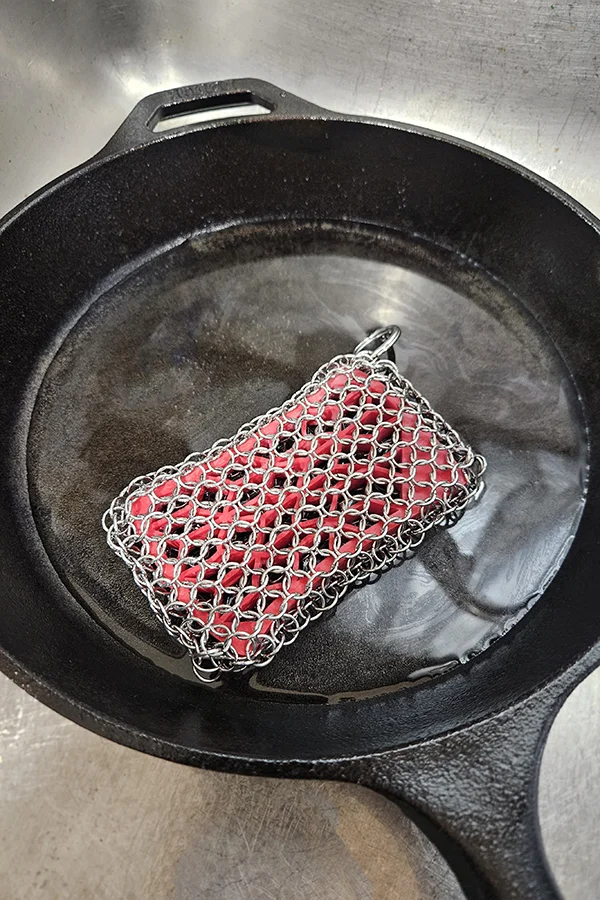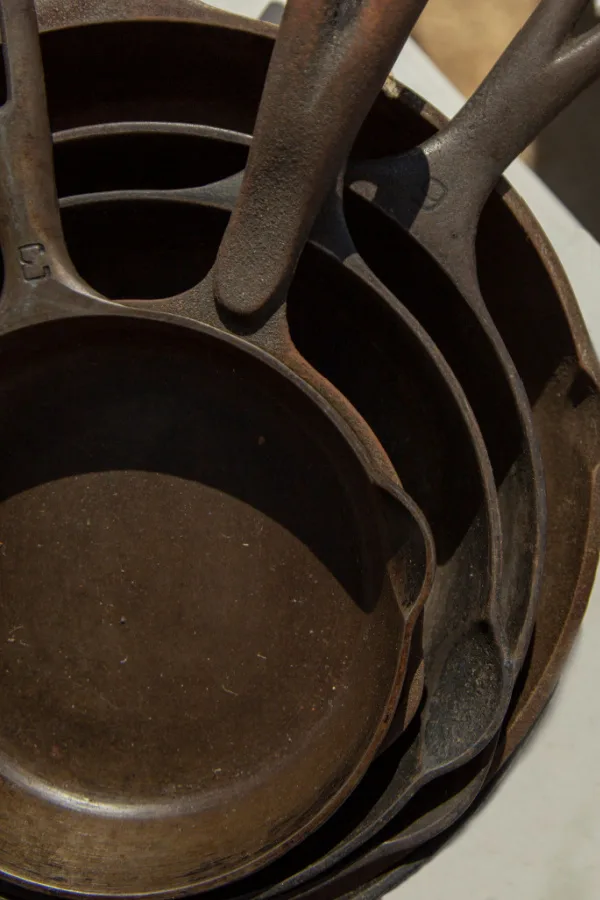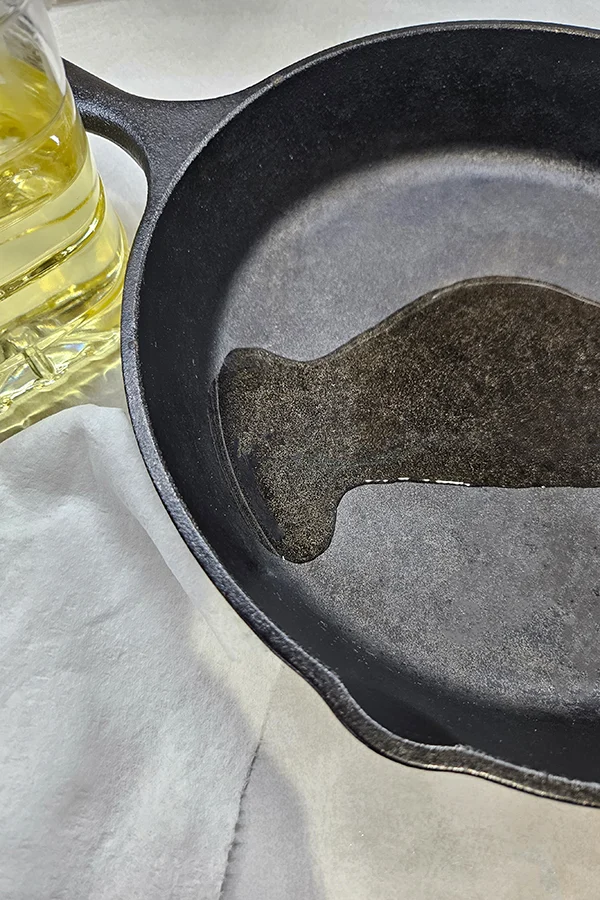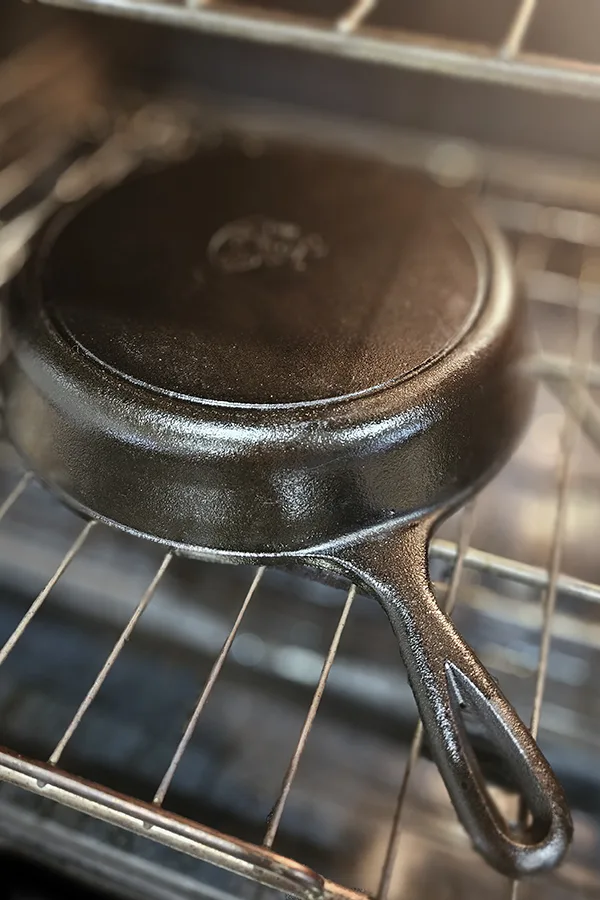If you own any type of cast iron cookware it is important that you know how to properly clean, season, and re-season the pots and pans. Otherwise you might end up with a rusty skillet that looks unpleasant and seems unusable.
However, the good news is that even those pans that are bright orange in color can be brought back to life. Although the task might first look impossible, it is a lot easier than you might think!
Seasoning and re-seasoning is a relatively simple process that can be done at home with a few basic supplies. All you need is a cast iron pan, some oil, and a heat source.

With just a few steps and a little bit of time you will have durable cookware that will last a lifetime!
Although many of us may remember our parents or grandparents using cast iron skillets in kitchen, there are several generations that have only used stainless or non-stick cookware. These easy to clean, non-stick pots and pans became the household cookware of choice in the late 1960s and early 1970s.
However, with the recent increased popularity of cooking over a campfire and the use of gas griddles, cast iron cookware has made a huge comeback. In fact, you can now find pre-seasoned cast iron cookware in most hardware and multi-purpose stores.
The heavy duty cookware is ideal for cooking because it retains heat well and it also heats evenly, making it ideal for cooking a variety of dishes, both inside and outside. And once properly seasoned, the cooking surface will become non-stick.
What Is Seasoning?
So what does seasoning cast iron actually mean?
Seasoning refers to the coating that your cast iron cookware gets by heating a thin layer of oil or fat directly on the pan. This oil or fat creates a bond with the metal, making a non-stick surface for cooking. In addition, the seasoning also helps to prevents it from rusting.
Most new cast iron cookware comes pre-seasoned and ready to use immediately. However, over time that initial seasoning can wear off and the pans will need to be re-seasoned.
In addition old, rusty, cast iron pots and pans that have been passed down for generations or found at garage sales and thrift stores will need to be scrubbed down to their original state. And the seasoning process will need to be started from scratch.
The good news is that even completely rusty cast iron pans can still be made to look good as new!
Seasoning & Re-Seasoning Cast Iron Cookware
Removing Any Rust & Buildup
If your cast iron cookware has already been pre-seasoned or it doesn’t have any visible rust or buildup, you can go ahead and skip to the following step. But if you are now in possession of a rusty and dirty piece of cast iron cookware, don’t worry, all is not lost!
A little bit of rust, or even a lot of rust and buildup doesn’t mean the piece isn’t usable. You just need to put in a bit of elbow grease to remove the rust and start the seasoning process.
To remove the rust and buildup, you will need steel wool, rags and/or paper towels. Start by washing the rusty cast iron cookware in water, using soap if preferred.
Although typically you will never wash a seasoned pan in soap, this is one time that you can do so.
Next, use steel wool to remove any rust or food buildup. This may take time and repeated scrubbing, depending on the condition of the pan.
Scrub the entire surface of the cookware, including the handle and even the sides and bottom that aren’t directly in contact with food sources. Once you remove most of the debris, repeat the process with rags or paper towels until all of the buildup and rust is gone.
Give the piece a final rinse under water and dry it completely. When the cookware is dry, you can move on to the seasoning process.
Seasoning and Re-Seasoning Cast Iron Cookware
This process is the same whether you are seasoning your recently scrubbed cast iron cookware for the first time or you are re-seasoning a well maintained item.
Preheat your oven to 450º Fahrenheit. While it warms up, add a small amount of vegetable or canola oil to the cast iron cookware. Rub it in thoroughly using a rag or paper towel.
Be sure to wipe down all of the sides, bottom, and handle of the cast iron as well. Wipe off any excess pools of oil so that you are left with only a thin coat.
Place your cast iron cookware upside down onto the middle rack of your preheated oven. Let it bake for about an hour. Then carefully remove the item and allow it to cool for safe handling.
*If you have a large kettle, you will need to heat it over a fire. You can do this by using a Fire Pit Cooking Bar or place it on a metal cooking rack designed for outdoor use.
Once cool, wipe the surface with a paper towel. If the towel comes up clean, then you have properly seasoned your skillet. If your paper towel comes away with black residue, then you need to repeat the process of scrubbing, oiling, and baking.
Depending on the condition of the cookware, the process may need to be repeated a few times for best results. You are looking for the cast iron cookware to have a black and shiny surface with no residue when wiped down.
Cleaning & Maintenance
Wipe out any excess food. As soon as you’re done cooking, carefully wipe out any excess food with a paper towel or a clean dishcloth. This will help prevent food from sticking to the pan and making it harder to clean later.
Rinse with hot water. As soon as the pan is cool enough to handle, rinse it under hot water.
Scrub the pan. If there is any stuck-on food, you can scrub it with a rubber scraper. You can also use a wire brush or chainmail scrubber made specifically for cast iron pans for really tough residue. (Product Link: Chainmail Cast Iron Pan Scrubber)

Dry the pan immediately. Dry the pan immediately with a clean towel. This will help prevent rust.
Oil the pan. Once the pan is dry, rub it with a thin layer of oil. This will help protect the seasoning and keep the pan from rusting.
Keep in mind that some acidic foods like vinegar and tomatoes can cause damage to the seasoning. If that occurs, you need re-season the cookware after preparing such foods. And remember to re-season your pan occasionally each year for the best results.
Following these simple tips will allow you to get years of wonderful meals and dishes from your cast iron cookware!
Enjoy!
Mary and Jim

Jim and Mary Competti have been writing gardening, DIY and recipe articles and books for over 15 years from their 46 acre Ohio farm. The two are frequent speakers on all things gardening and love to travel in their spare time.
As always, feel free to email us at thefarm@owgarden.com with comments, questions, or to simply say hello! You can sign up for our free email list in the subscribe now box in the middle of this article. Follow us on Facebook here : OWG Facebook. This article may contain affiliate links.



